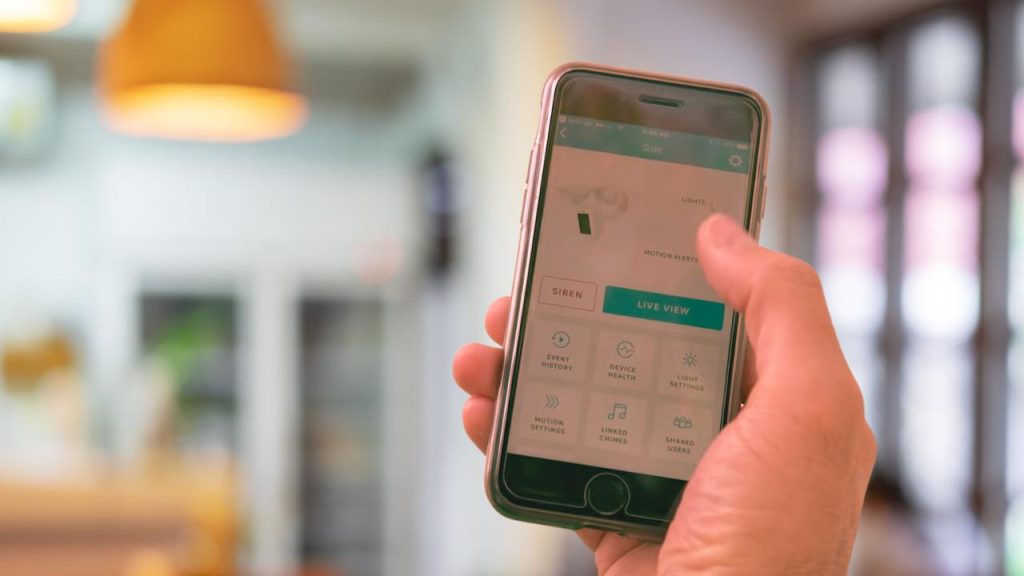Feeling unsafe at home? Want to keep your family and home protected? Installing a security camera can help!
This easy guide will show you, step-by-step, how to set up a Ring Floodlight Cam. We’ll explain what comes in the box, where to put it, how to attach and wire it, how to connect it to WiFi, and how to make it send alerts when it spots movement.
The Ring Floodlight Cam lights up intruders and sounds a loud alarm to scare them away! Follow these simple instructions to get video monitoring, motion detection alerts, and bright security lighting for your home’s safety.
Read on to transform your home security!
Pre-Installation Preparation
Before installing your new Ring Floodlight Cam, you need to complete a few key preparation steps.
First, carefully unbox the camera and check that you have the Floodlight Cam unit, mounting bracket, screws, anchors, wires, and any other included components.
Thoroughly familiarize yourself with each part. Next, walk around your home to select the optimal mounting location based on factors like WiFi signal strength, electrical connections, and the camera’s field of view.
Take time to also gather tools like a ladder, drill, and screwdriver along with extra materials needed for the installation like wire nuts or insulation tape.
Gathering Tools and Materials
Now that you have selected the installation location, take inventory of the required tools and materials. You will need a screwdriver, drill, ladder for height, and basic safety gear like gloves and goggles.
Ensure you have the right drill bits, screws, anchors, and mounting bracket that came with your Ring Floodlight Cam. Take stock of the electrical wiring situation and obtain additional wire nuts, conduits, or sealant tape as needed.
Check that you have enough Wi-Fi signal strength at the location using your smartphone. Finally, flip the circuit breakers to cut power during the installation. Taking these preparation steps will facilitate the upcoming mounting and wiring stages.
Mounting the Floodlight Cam
The first step in installing the Ring Floodlight Cam is securely mounting the bracket to your home. Start by selecting the best area for the mount on your home’s exterior based on the previous preparation regarding optimal camera coverage and ease of wiring.
Using the included screws, anchors, and your drill, affix the sturdy mounting bracket to this spot, following the provided directions to ensure it can safely handle the weight of the light and withstand weather elements.
Make sure to avoid pipes, vents, and other obstructions behind the mounting area you drill into.
Next, take the Ring Floodlight Cam unit and physically attach it to the now secured mounting bracket using the guide holes, properly aligning the camera’s sensors and lights for your coverage needs.
Confirm the device clicks securely into place on the mounting hardware.

Wiring and Power Connection
Now it’s time to wire up your new Floodlight Cam to your existing electrical system.
First, turn off the power to the mount location at the circuit breaker. Identify your home’s live, neutral, and ground wires, referring to documentation if unsure.
Carefully connect these existing wires to the corresponding input ports on the Ring Floodlight Cam with wire nuts or other secure connectors. Route all wiring through the mounting bracket into the backside of the camera.
Referring to any labels, plug the attached cable from the Floodlight Cam into the unit. Then take the water-resistant junction box cover and secure it over the hardware to complete the wiring and power setup.
Turn the power back on and check that the camera indicators light up, signaling proper electrical connections.
Adjusting Camera Settings
Your Ring Floodlight Cam is now physically installed, wired up, and has power. Next, you need to connect it to your home’s WiFi and customize its security settings.
Start by downloading the Ring app on your smartphone or tablet. Open the app, create a Ring account if you don’t have one, and log in.
Follow the prompts to sync up your new Floodlight Cam. As the camera communicates with the app, you will go through a few steps to get it on your wireless network.
Once online, you can adjust various settings in the Ring app related to your Floodlight Cam security. Tweak the motion detection sensitivity so you get alerts when needed without too many false alarms.
Set up customized activity zones and schedules for the camera and integrated floodlights. Get your home monitored and protected in no time with these personalization steps!
Testing and Troubleshooting
With your new security Floodlight Cam installed and fully set up, it’s time to test if everything is working properly.
In the Ring app, verify you can view a crisp live feed from the camera. Trigger the motion detector by walking in front of the Cam, confirming it captures video when activated. Have a friend ring your doorbell to verify it triggers the Floodlight Cam recording and smart lighting floodlights as expected.
If issues arise, you may need to troubleshoot. Common problems include unstable mounts, faulty wiring connections, disruptions in Wi-Fi signals, or improper motion detection zones.
Review the installation instructions and app settings, check the LED indicators on the device, and test different user motions to diagnose any problems. Proper testing saves future headaches!

Maintenance and Tips
Installing your Ring Floodlight Cam is the first step to enhanced home security. Following best practices for maintenance and usage will ensure your new camera system remains an effective deterrent for years to come.
Check on your Floodlight Cam periodically to perform light maintenance tasks like cleaning the camera lens using a microfiber cloth.
Make sure to regularly update the device firmware and Ring app from the software settings menu as updates improve performance and fix bugs.
Consider adding a Ring Protect subscription plan for convenient cloud video storage and advanced motion detection options.
Positioning tips are also key for security camera effectiveness. Angling the Floodlight Cam for an optimal field of view eliminates blind spots and focuses motion detection on key zones.
Strategic placement of additional standalone cameras, such as pointing a camera at the Floodlight itself, further bolsters monitoring abilities. Taking advantage of Ring’s ecosystem of products leads to the ultimate DIY home security network.
With proper care and utilization, your Floodlight Cam can become an invaluable guardian watching over your home.
In case of your security cams bulbs get damaged, check out how to change bulbs in a Ring Floodlight Camera.
Conclusion
In this Ring Floodlight Cam installation guide, we covered the step-by-step process from unpacking to final testing.
You now understand how to select the camera location, safely mount and wire the device, adjust key settings like motion detection parameters in the Ring app, and troubleshoot issues.
With a bit of effort, you can set up robust outdoor security and smart lighting through this single DIY gadget, which you can also use as regular light. As needed, refer back to this guide or visit Ring’s customer support resources.
We hope you feel empowered to explore more Ring products and take full control of monitoring your property with this new essential home security solution in place!







